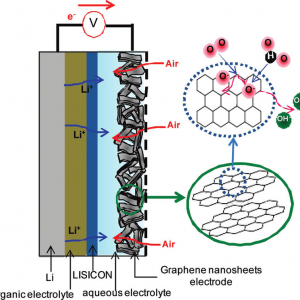Eight Important Parameters of Lithium Batteries
Lithium batteries are already closely related to our lives, and our food, clothing, housing and travel are inextricably linked to them. However, many people do not understand lithium batteries. This is not limited to ordinary consumers. Even the designers of various electrical appliances have a smattering of knowledge about lithium batteries.Below we will share with you a series of articles on lithium battery knowledge. Through these articles, you will have a systematic understanding of lithium batteries.Lithium-ion batteries have the advantages of high energy density, high conversion efficiency, long cycle life, no memory effect, no charge and discharge delay, low self-discharge rate, wide operating temperature range and environmental friendliness. It has become an ideal carrier of electrical energy and has been widely used in various fields.
Generally speaking, when we use lithium-ion batteries, we will pay attention to some technical indicators as the main factor in measuring the “merits” of their performance.So, which indicators should we pay special attention to when we need to use them?
1. CAPACITY
This is a parameter that everyone is more concerned about.Smart phones have long been popular. When we use smart phones, our most worry is that the battery is low, and we need to charge frequently, and sometimes we can’t find a place to charge.In the early functional machines, under normal use, a fully charged battery can stand by for 3 to 5 days, and some products can even stand by for more than 7 days.But in the era of smart phones, the standby time is terrible.One of the very important reasons is that the power consumption of mobile phones is getting bigger and bigger, but the capacity of the battery has not increased year-on-year.
The unit of capacity is generally “mAh“ (milliampere-hour) or ”Ah” (ampere-hour), and there is a difference between the rated capacity and the actual capacity when used.The rated capacity refers to the total power that a fully charged lithium-ion battery can provide when it is discharged to the cut-off voltage at a specific discharge magnification (C-rate) under laboratory conditions (ideal temperature and humidity environment).The actual capacity is generally not equal to the rated capacity, it is directly related to temperature, humidity, charge and discharge magnification, etc.Under normal circumstances, the actual capacity is smaller than the rated capacity, and sometimes even much smaller than the rated capacity. For example, in winter in the north, if you use a mobile phone outdoors, the battery capacity will drop rapidly.
2. ENERGY DENSITY
Energy density refers to the amount of electricity that can be stored and released per unit volume or unit weight of a battery. There are two units: Wh/kg and Wh/L, which represent the specific energy by weight and the specific energy by volume.The power here is the integral of the capacity (Ah) and the operating voltage (V) mentioned above.When applied, the index of energy density is more instructive than capacity.
Based on the current lithium-ion battery technology, the energy density level that can be achieved is about 100~200Wh/kg. This value is still relatively low, and it has become a bottleneck in the application of lithium-ion batteries on many occasions.This problem also appears in the field of electric vehicles. When the volume and weight are strictly limited, the energy density of the battery determines the maximum mileage of the electric vehicle at a single time, so the unique term “mileage anxiety disorder” appeared. .If the single mileage of an electric vehicle is to reach 500 kilometers (comparable to that of a traditional fuel vehicle), the energy density of the battery cell must reach more than 300Wh/kg.
The improvement of the energy density of lithium-ion batteries is a slow process, much lower than Moore’s Law in the integrated circuit industry, which has caused a shear difference between the performance improvement of electronic products and the energy density improvement of batteries, and it continues to expand over time.
3. CHARGE AND DISCHARGE MAGNIFICATION
This indicator will affect the continuous current and peak current of lithium-ion batteries during operation. The unit is generally C (short for C-rate), such as 1/10C, 1/5C, 1C, 5C, 10C, etc.Take an example to illustrate the specific meaning of the magnification index. The rated capacity of a battery is 10Ah. If its rated charge and discharge magnification is 1C, then it means that this type of battery can be repeatedly charged and discharged with a current of 10A until the cut-off voltage of charging or discharging.If its maximum discharge magnification is 10C@10s and the maximum charging magnification is 5C@10s, then the battery can be discharged with a current of 100A for 10 seconds and charged with a current of 50A for 10 seconds.
The current value corresponding to the charge-discharge magnification is multiplied by the operating voltage to obtain the continuous power and peak power indicators of lithium-ion batteries.The more detailed the definition of the charge and discharge magnification index, the greater the guiding significance for use.Especially lithium-ion batteries, which are the power source of electric vehicles, need to specify the continuous and pulse magnification indicators under different temperature conditions to ensure that lithium-ion batteries are used within a reasonable range.
4. VOLTAGE
The voltage of lithium-ion batteries has some parameters such as open circuit voltage, operating voltage, charging cut-off voltage, and discharge cut-off voltage. This article will not discuss them separately, but will focus on an explanation. The open circuit voltage, as the name suggests, means that the battery is not connected to any load or power supply, and the potential difference between the positive and negative electrodes of the battery is measured. This is the open circuit voltage of the battery.
5. LIFE SPAN
The life of lithium-ion batteries will gradually decrease with use and storage, and there will be more obvious performance.Still taking smart phones as an example, for mobile phones that have been used for a period of time, it is obvious that the mobile phone battery is “not durable”. At first, it may only be charged once a day, and later it may need to be charged twice a day. This is the manifestation of the continuous attenuation of battery life.
The life of lithium-ion batteries is divided into two parameters: cycle life and calendar life.The cycle life is generally measured in times, which characterizes the number of times the battery can be charged and discharged in cycles.Of course, there are conditions here. Generally, under ideal temperature and humidity, the rated charge and discharge current is used for deep charge and discharge (100% DOD or 80% DOD), and the number of cycles experienced when the battery capacity decays to 80% of the rated capacity is calculated.
6. INTERNAL RESISTANCE
The internal resistance of a lithium-ion battery refers to the resistance of current flowing through the battery when the battery is working. It includes ohmic internal resistance and polarization internal resistance. Polarization internal resistance also includes electrochemical polarization internal resistance and concentration difference polarization internal resistance.
The ohmic internal resistance is composed of electrode material, electrolyte, diaphragm resistance and contact resistance of each part.Polarization internal resistance refers to the resistance caused by polarization during electrochemical reactions, including the resistance caused by electrochemical polar polarization and concentration difference polarization.
The unit of internal resistance is generally milliohm (mW). For batteries with large internal resistance, when charging and discharging, the internal power consumption is large and the heat generation is serious, which will cause accelerated aging and life attenuation of lithium-ion batteries. At the same time, it will limit the application of large magnification charge and discharge.Therefore, the smaller the internal resistance, the better the life and magnification performance of lithium-ion batteries.
7. SELF-DISCHARGE
When the battery is placed, its capacity is constantly decreasing. The rate at which the capacity decreases is called the self-discharge rate, which is usually expressed as a percentage: %/month.
Self-discharge is something we don’t want to see. A fully charged battery will have a lot less power after a few months, so we hope that the lower the self-discharge rate of lithium-ion batteries, the better.
Special attention needs to be paid here. Once the self-discharge of a lithium-ion battery causes the battery to be over-discharged, the impact is usually irreversible. Even if it is recharged, the available capacity of the battery will be greatly lost, and the life span will be rapidly attenuated.Therefore, for long-term placement of unused lithium-ion batteries, you must remember to charge them regularly to avoid over-discharge due to self-discharge, which greatly affects performance.
8. OPERATING TEMPERATURE RANGE
Due to the characteristics of the internal chemical materials of lithium-ion batteries, lithium-ion batteries have a reasonable operating temperature range (common data is between -40℃~60℃). If used beyond a reasonable range, it will have a greater impact on the performance of lithium-ion batteries.





